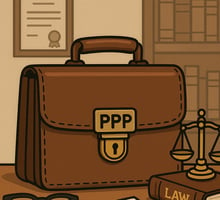In my last post, I asserted that “The sole purpose of taking a deposition is to get impeachment...
Depositions - Carving
Depositions - Carving
In the last post, I talked about the "crystals and mud" technique in depositions, that is, the technique for keeping most of the deposition casual, friendly, relaxed--"muddy"--while being alert to opportunities to collect concise snippets for cross-examination--"crystals." Here, I want to talk about the situation where it's the witness who is being muddy. More specifically, I'm talking about the witness who gives you the cross-material you want, but (either intentionally or unintentionally) wraps it up in a long answer with a lot of extraneous detail.
The first thing to realize about "good but long-winded" answers to questions is that you can't accept them. If you don't have your cross-examination material in concise and precise form, it's not actually cross material. You can't use it. Period. (I explain why this is in more detail in a different post.)
So what do you do when you get the paragraph-long answer from the witness with your cross-examination nugget buried in the middle somewhere? You need to carve it out.
Let's take a look at how to do that.
Imagine you are deposing the same CFO we've been talking about in the last few posts (poor guy). The following exchange happens:
Q. Let's talk about the earnings call for Q1 2024, ok?
A. Ok.
Q. On that call, am I right that you gave some projections for how the manufacturing side of the business was expected to perform?
A. Yes, that sounds familiar, I mean, I think you showed me the transcript and it had something about that in it.
Q. And when you gave those projections, had you verified them with the head of manufacturing first?
A. Well, see, let me explain a little about how we get ready for earnings calls, see, it's really important for us to be accurate in what we say, but obviously, I don't know all the information about everything in the company. So we have this really good process in place for making sure all the information rolls up to me in a format I can use in the calls. So typically this involves I get reports from each of the business heads which I read, and if I have any questions, I talk to them, and make sure I understand. From that I prepare my remarks and then I send them off to legal counsel and they review and then that's what I use. So that's what I do for every call, and it's what I did on this call. Now I remember that the manufacturing reporting didn't have all the projections, but I was pretty sure based on some things I had seen earlier what the numbers were. I think I tried to call Joe who heads it, but he was on vacation and I couldn't reach him. But I was pretty sure they were right, so they went into the report, and then of course I sent them to legal, per our process, and made sure we went through all that process before I made the remarks on the call. So yeah, I mean, that was basically the usual process which we went through for that call.
OK, so basically, the guy has given you a great admission -- he DIDN'T verify the projections he provided on the earnings call -- but he's wrapped it up in a whole bunch of other information about process and legal review etc. He might have been prepped to do this; he might on his own have decided this was helpful; or he might just be nervous and dealing with it by talking too much. Whatever the reason, the key point for you is that while there is an admission buried in this answer, it is totally unusable now. You have to carve it out.
Here's how I'd go about carving out the admission.
Q. Let me make sure I understand what you are saying. You're saying you have a general process for getting ready for earnings calls, is that right?
A. Yeah, a general process.
Q. And that's a process you use for all earnings calls, not just this one, is that what you're saying?
A. Exactly, that's our process.
Q. But you followed it on this call?
A. Right.
Q. And that means you went out and got reports from all the business heads, right?
A. Right.
Q. And that included the head of manufacturing, that's what you are saying?
A. Right, his was in it.
Q. You had the manufacturing report, but what you are saying is that it didn't have all the projections?
A. Yeah.
Q. The manufacturing report for Q1 2024 had some of the projections but not all of them, do I have that right?
A. Yes.
Q. But you knew the other ones from previous work you had done, is that what you were saying?
A. Yeah, I mean we'd talked about them before.
Q. Got it. So all these numbers, both those in the manufacturing report and the ones you knew from before, went into your earnings script?
A. Yes.
Q. And, I think you said, you tried to go over those numbers one more time with Joe, but he was out of the office, is that what happened?
A. Yeah, exactly, he was on vacation.
Q. Got it, so when the earnings call came for Q1 2024 you delivered the script, right?
A. Yeah.
Q. On the Q1 2024 earnings call, you provided all the projections, correct?
A. Correct.
Q. Some of which had been in the manufacturing report and some which hadn't?
A. Right.
Q. And you didn't talk to Joe, the head of manufacturing, about the script before you gave it, right?
A. Right.
Q. But you sent it on to legal and followed all the normal processes you would do?
A. Of course.
Q. Got it. That makes sense. Now let me ask you about something else...
In essence, I've just repeated the witness's response to him but in smaller chunks. But of course, by repeating it in smaller chunks -- carving it up -- I've gotten what I was missing before. I've gotten clean, usable, cross-examination material, namely:
Q. On the Q1 2024 earnings call, you provided all the projections, correct?
A. Correct.
Q. Some of which had been in the manufacturing report and some which hadn't?
A. Right.
Q. And you didn't talk to Joe, the head of manufacturing, about the script before you gave it, right?
A. Right.
Now, to some extent I'm asserting this type of "carving" will work. You'll have to try it for yourself to know for sure. But it does work a lot of the time, and there are a few reasons why:
First, you are just repeating what the witness already said. Most people are fundamentally honest (or at a minimum know they should appear that way) and aren't going to fight about things they just said. Even if the witness has been prepped to be evasive, it seems harmless to repeat what they've already said. I mean, the cat's out of the bag already, right?
Second, does this "carving" rhythm sound a little like the rhythm of cross-examination? It does. Remember how in the "runway" for cross-examination you can use easy, uncontroversial questions to get the witness into a yes/no rhythm. Similarly, when you are "carving" you can use the witness’s own words to get them into a rhythm of answering yes or no to your questions. This makes it harder for them to break out of that rhythm when you get to the part of your questioning where you are carving out the key nuggets.
Third, you can use a little "crystals" and "mud" technique here as well. While keeping the witness in the general rhythm, you can still be a little more casual on the earlier questions. Just make sure you are in crystal-mode when you get the cross-material you are trying to carve out.
* * *
A final thought -- carving out an answer isn't easy. It's going to take some practice, and it won't always work. That's to be expected. But the difference between depositions where you get "almost good" answers and those where you carve out beautiful cross-examination crystals is like what Mark Twain said about the almost right word and the right word—"it's the difference between the lightning bug and the lightning."



